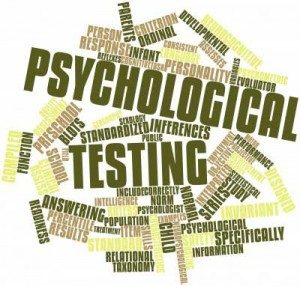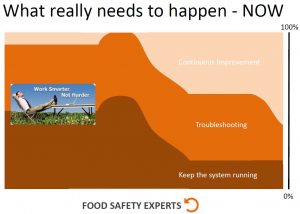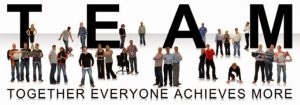Introduction Strong Team
 Historically, in a lot of companies, the quality department has been seen as the department to park those members of staff that were not functioning well elsewhere. It was thought that a non-performing person would not hurt the organization when transferred to the quality department. While this approach might have worked somewhat in the 70’s, 80’s and 90’s of the last century, the world has changed! With major changes in the food industry in terms of legislation and certification requirements over the past two decades this attitude cannot be maintained anymore.
Historically, in a lot of companies, the quality department has been seen as the department to park those members of staff that were not functioning well elsewhere. It was thought that a non-performing person would not hurt the organization when transferred to the quality department. While this approach might have worked somewhat in the 70’s, 80’s and 90’s of the last century, the world has changed! With major changes in the food industry in terms of legislation and certification requirements over the past two decades this attitude cannot be maintained anymore.
Stronger even, too many companies are still facing a situation where the population of the quality department does not have the right level of education and experience, let alone the right competencies to be truly successful in the current world. Globally, GFSI certification requirements have gone up dramatically over the past 10 years. In EU the introduction of the General Food Law in 2002 (and subsequent additions) have forced a much stricter regime in terms of quality and food safety management. The most recent biggest change without doubt is the Food Safety Modernization Act in the USA, which is the biggest overhaul of food law in the USA in the last 70 years!
Today, it is paramount for any company producing or handling food to have a competent, knowledgeable and motivated quality department with strong professionals. Unfortunately this is still not true everywhere. This article outlines the 6 steps to move towards a stronger and more competent quality & food safety department. All improvements have to start with bringing the right people on board, hence this is an important topic for most companies.
Step 1 – Assessment for a Strong Team
 It all starts with setting up a proper assessment of the entire department. If possible and management agrees to this you could even consider doing this for the entire organization (this is valid for this entire 6-step approach). In the assessment you want to focus on several areas: education & knowledge, mental capabilities (IQ), team work preferences and personal management style preferences.
It all starts with setting up a proper assessment of the entire department. If possible and management agrees to this you could even consider doing this for the entire organization (this is valid for this entire 6-step approach). In the assessment you want to focus on several areas: education & knowledge, mental capabilities (IQ), team work preferences and personal management style preferences.
Of course there are various different tests that would fit the description of the four main areas to cover. Especially on IQ, EQ and personal management style preferences there are loads of tests available. In order to keep things simple you might consider using a free tool like the ones you can find on 123test.com. Here you will find all these tests for free or for a very little amount of money per test.
When communicating you are going to take people into the assessment you really want to be very clear up front that the information gathered will be used for development purposes only and not for appraisal, job level scoring etc. This even holds true for those people that already are known to be ill performers. The reason for this is that in many countries labour law will not allow you to use this type of information for the previously named purposes.
Step 2 – Activity Analysis
Next to the assessment it is wise to ask all staff in your department to keep a detailed time sheet for a period of one month. This is to get insight in what areas of each person’s work take most time and it also gives you a good view on the overall work pressure. Again, before starting this exercise, you want to explain to the staff members that all the information will be used to shape the program later on, not for personal judgement. For this reason you will not report individual data, but only summarized data across the entire department.
Before stating this exercise you should make a list of all potential activities people can perform as part of their daily tasks. It is also wise to make a categorization of the activities into three main categories:
- Operational tasks – these are all the tasks which are executed to maintain operational control, to ensure certification is maintained.
- Troubleshooting – these are all the tasks that arise because of quality and food safety issues. Typically these tasks will prevail over other tasks and give rise to high perceived workloads.
- Continuous improvement – these are the tasks directly connected to improvement activities. Continuous improvement is the most important area to spend time in as it is the only area which is able to prevent trouble.
 If you like to have a typical example of an Excel file to be used for activity monitoring you can download it here.
If you like to have a typical example of an Excel file to be used for activity monitoring you can download it here.
Once you have gathered all the information on the hours people spend on the various tasks you can bring all information together create a graph like this to discuss with you senior management. In most organization you will typically find that approximately 50% of the time is spent on operational tasks, around 40% is of the time is spent on trouble shooting and the least amount of time is spent on continuous improvement. If you take into consideration that the bar is continuously being raised by customers and external certification requirements (and in some cases regulatory changes as well), it is clear you need to take action.
Step 3 – Personal interviews
 Once the analysis results of both the assessment and the time consumption are available you should plan personal interviews with all your staff members. Discuss the personal results with them openly and let them give comments from their side. Ensure you take good notes and listen very well. Do not go into a judgement mode, because this will really upset people.
Once the analysis results of both the assessment and the time consumption are available you should plan personal interviews with all your staff members. Discuss the personal results with them openly and let them give comments from their side. Ensure you take good notes and listen very well. Do not go into a judgement mode, because this will really upset people.
Re-iterate that this process is a starting point to build a stronger quality and food safety team within the organization. Explain once more that the individual information will not be shared with management and only summary figures will be discussed as part of the overall approach. Finally, stress again that the information will not be used for appraisal purposes.
During the personal interviews you can already start focussing on people’s training needs and see if you can start building a long-term training plan for each staff member. This way you will get a long-term training plan for your department as a bonus. You will need this later on once you have convinced the senior management to invest to substantiate the investments you want to make.
Step 4 – Culling to Create a Strong Team
Sometimes there are people in your department that totally are not up to the job. This should already have been clear from past appraisals. If not, you must start doing so as soon as possible. But always make sure you do not use any of the information provided to you as part of this process. From the start you have made it explicit this would never happen.
Of course you cannot build a strong team with bad people in it. If someone is really not up to the job you want to remove this person from the team, and most likely also from the entire organization. Please ensure to do this is a respectful manner and following the HR processes of your organization. In the end this is best for the person at hand and also for your entire team. Most often the team has seen the ill-performance for a long time and the team will most likely applaud you for taking the right action.
Step 5 – Feedback and Improvement Plan
After all the personal interviews and actions towards potential ill-performers, you are ready to discuss your high level plans with senior management to seek their agreement. This is necessary, because you want to make sure what budget you will be able to attain for your plans. Sometimes you might have to adjust the timescale at which you want to implement things because of budget reasons. This is not a problem – the most important thing here is to get an improvement plan in place an deliver against it. Have a look at our website for a nice presentation on how to create a sense of urgency with your senior management.
Once you have discussed and agreed your high level plan with senior management it is time to organize a workshop with your department and discuss all the high level (summary) analysis of the assessment, activity monitoring and training requirements with the team. Together you ratify the training requirements and define detailed actions and improvements in the way of working you would like to implement. It is not necessary to make big strides from the start. Just make a detailed and realistic plan for a 1 year horizon.
 Enable all team members to give input during the workshop. An easy way to do this is to work in small teams of 3 people and ask everybody to brainstorm their improvement ideas on post-its. In small teams of 3 people, the post-its are then prioritized by using a matrix with high/low impact and high/low effort. Once each team has done this you can bring all the results together in one big overview. Typically you will focus in the first year on the high impact/low effort proposals for implementation.
Enable all team members to give input during the workshop. An easy way to do this is to work in small teams of 3 people and ask everybody to brainstorm their improvement ideas on post-its. In small teams of 3 people, the post-its are then prioritized by using a matrix with high/low impact and high/low effort. Once each team has done this you can bring all the results together in one big overview. Typically you will focus in the first year on the high impact/low effort proposals for implementation.
Step 6 – Continuous Attention
Once you have agreed the detailed action plan with your team during the workshop you need to make sure to pay continuous attention (at least monthly) to the progress of the actions in your plan. Very often there will be minor set-backs – help people who are facing these and make sure not to “punish” them for not reaching a target.
There will also be successes – these you want to celebrate with your team. Successes are an important factor in creating cohesion within the team and a stronger drive for all the other results, yet to be achieved.
One final note: make sure that you are not the owner of all the actions, it should be a fair distribution across the entire team. This is a necessary requirement to create cohesion within the team.
